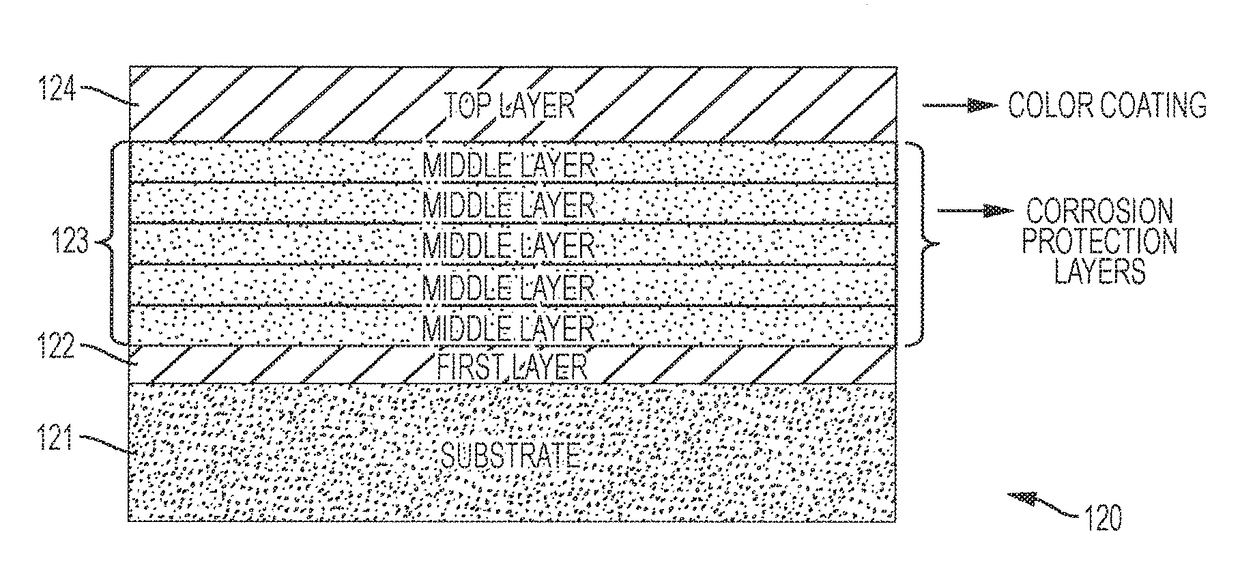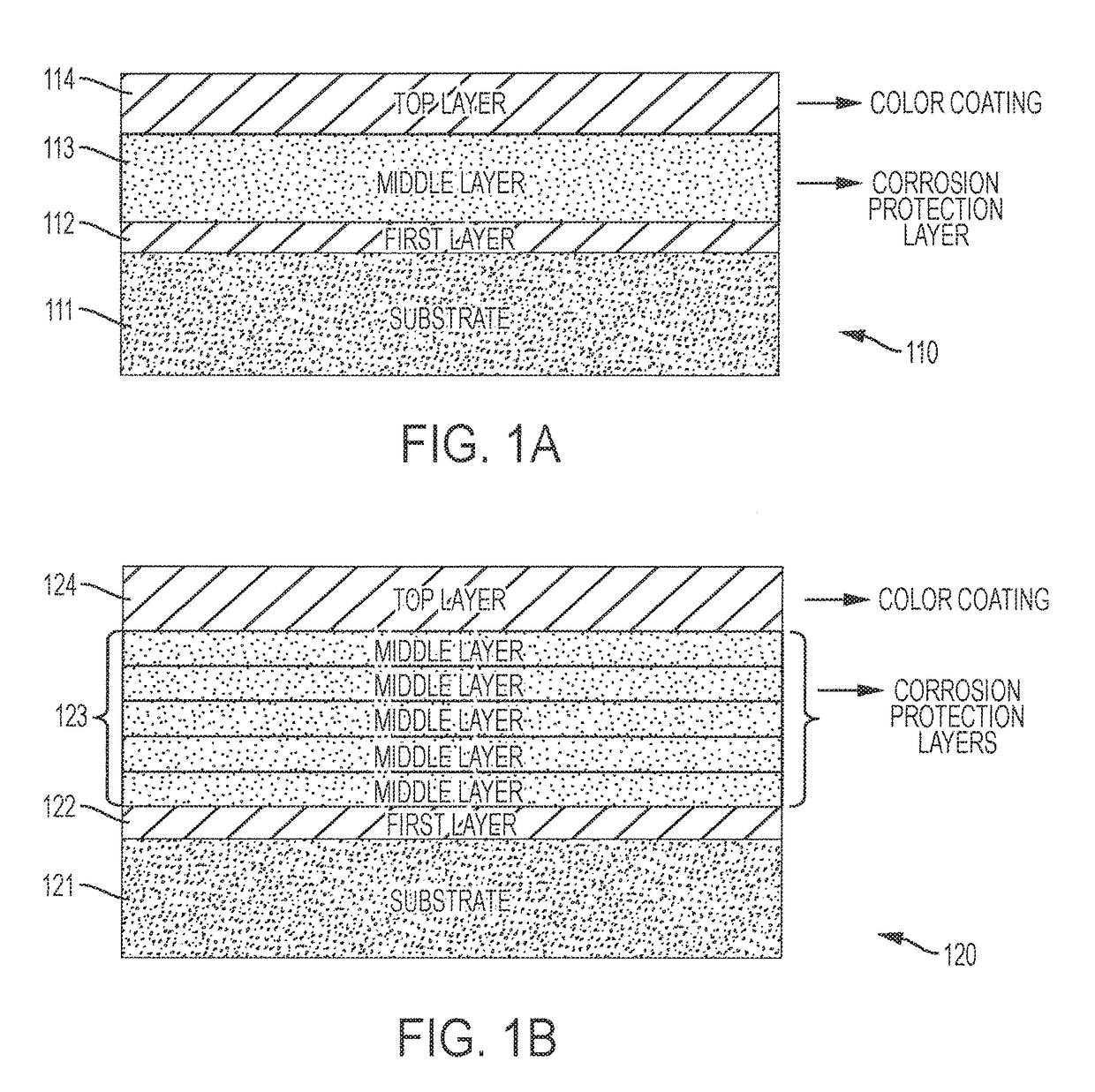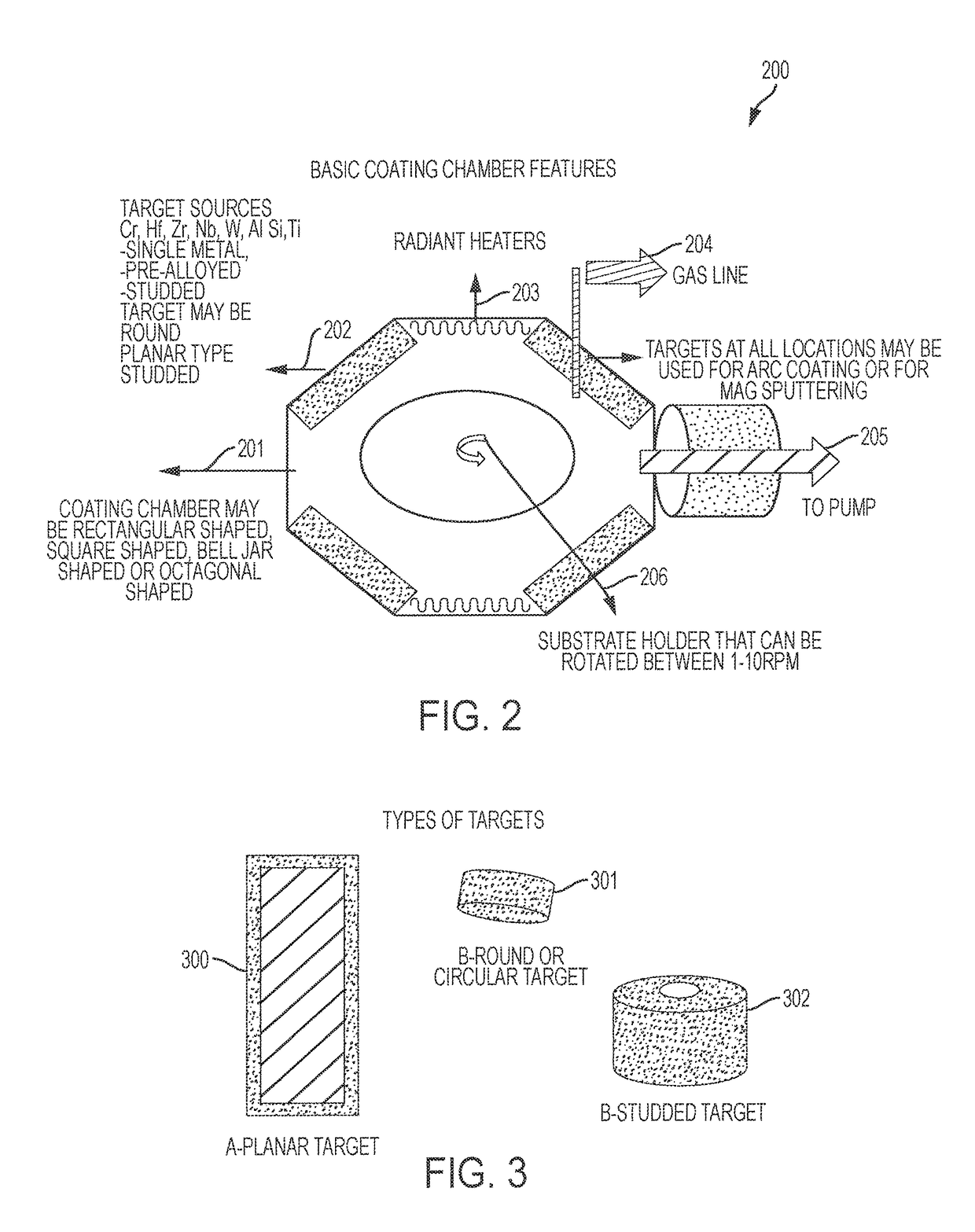Coatings for surgical instruments
a surgical instrument and coating technology, applied in the field of coatings, can solve the problems of shortening the useful life of the instrument, spotting, staining, wear and/or damage of the surgical instrument, etc., and achieve the effect of improving the corrosion resistance of the instrument, and enhancing the corrosion resistan
- Summary
- Abstract
- Description
- Claims
- Application Information
AI Technical Summary
Benefits of technology
Problems solved by technology
Method used
Image
Examples
example 1
Corrosion Resistant Layer Preparation
[0079]Stainless steel coupons having a CrN thin film coating (Cr first layer, CrN second layer), CrN thick film coating (Cr first layer, CrN second layer), NbO coating (Nb first layer, NbO second layer), HfO coating (Hf first layer, HfO second layer), HfN coating (Hf first layer, HfN second layer), and NbN coating (Nb first layer, NbN second layer) were prepared according to the methods described above. The CrN thin film and CrN thick film coatings (Set Nos. 1 and 3) were produced using reactive cathodic arc (RCA) technology. The NbO, HfO, HfN, and NbN coatings (Set Nos. 2 and 4-6) were produced using reactive magnetron sputtering (RPMS or suputtering) technology.
TABLE 1Six example coatings according to the invention.CrN CrN CoatingThinThickcompositionfilmfilmNbOHfNHfNNbNTechnology RCARCARPMSRPMSRPMSRPMSSet #13245617-4 NomXXXXXX17-4 LowXXXXNAX17-4 HighXXXXXX420 NomXXXXXX420 LowXXXXXX420 HighXXXXXX465 NomXXXNAXX465 LowXXXXXX465 highXXXXXX
[0080]In ...
example 2
Sample Analysis
[0081]Table 2 shows the results of sample analysis for the coating compositions shown in Table 1. The Calotte tester used a destructive tester for approximate coating thickness measurement on flat coupons (results summarized below). The Rockwell Diamler Benz test is a destructive coating adhesion / spalling test on flat coupons (results summarized below). The La wave tester is a modulus (elasticity) tester using laser induced acoustic waves (results summarized below).
[0082]The data in Table 2 shows that the advantageous properties of certain example coatings according to the invention. The HF values show generally good adhesion and spalling resistance.
TABLE 2Coupon sample analysis for the coatingcompositions shown in Table 1.La Wave onCalottoRockwell / Diamlarwitness(Si)on S304Benz Test on S304YoungsCoatingwitnessSpalling / AdhesionDensityModulusTypeThicknesslevel indicator(g / Cm3)(GPA)CrN (Thin)3.8HF-16.2320CrN (Thick)7.3HF 2-36.2218NbO3HE2-34.595HfO4.8HF-411.4131HfN3HF 1-2...
example 3
Coatings Thickness Analysis
[0083]FIGS. 5A-F illustrate example coatings and their thicknesses test results. FIG. 5A illustrates a CrN thin film having a thickness of 3.8 μm (this and other thicknesses in FIGS. 5A-F indicated and the pairs of arrows). FIG. 5B illustrates a CrN thick film having a thickness of 7.3 μm. FIG. 5C illustrates a NbO coating having a thickness of 3.0 μm. FIG. 5D illustrates a HfO coating having a thickness of 4.8 μm. FIG. 5E illustrates a HfN coating having a thickness of 3.0 μm. FIG. 5F illustrates a NbN coatings having a thickness of 3.4 μm.
PUM
| Property | Measurement | Unit |
|---|---|---|
| temperature | aaaaa | aaaaa |
| thick | aaaaa | aaaaa |
| thick | aaaaa | aaaaa |
Abstract
Description
Claims
Application Information
 Login to View More
Login to View More - R&D
- Intellectual Property
- Life Sciences
- Materials
- Tech Scout
- Unparalleled Data Quality
- Higher Quality Content
- 60% Fewer Hallucinations
Browse by: Latest US Patents, China's latest patents, Technical Efficacy Thesaurus, Application Domain, Technology Topic, Popular Technical Reports.
© 2025 PatSnap. All rights reserved.Legal|Privacy policy|Modern Slavery Act Transparency Statement|Sitemap|About US| Contact US: help@patsnap.com



